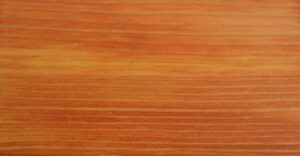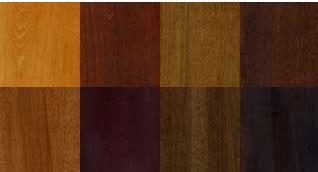Aniline Dyes Provide a Translucent Color to Wood Furniture
Aniline dyes are substances used to add color to wood, clothing and leather. When used on wood furniture, the product provides a translucent color. Therefore, after it is applied the grain of the wood still shows. Some describe the effect that aniline dye has on wood as “stained glass” because while the dye adds color to the wood, the wood’s patterns also remain visible.
History of Aniline Dye
Aniline dye was discovered in the mid-1850s by a young scientist who was conducting an experiment, and by accident created a substance that was determined to effectively dye textiles. When he realized that he had discovered something important and useful, he continued testing the substance, which was derived from coal tar. After the discovery of the effectiveness of the dye, the substance was modified and began to be sold in massive quantities to the clothing, woodworking and leather industries.
Benefits of Aniline Wood Dye

- It is considered to be organic.
- It comes in many different colors.
- It is known for its clarity.
- It saturates wood better than stain.
- It provides even color on wood with pores.
- It accentuates wood grain.
- It is easy to apply.
Is there a Difference between Water Based and Alcohol Based Wood Dye?
Aniline wood dyes can be either water based or alcohol based. Most professionals say that water-based dyes are the most resistant to fading over time, but some woodworkers think that the difference between the two types of dye is negligible. In other words, there is not a clear cut decision on which type is better in terms of being color fast. The main difference between water based and alcohol based dye is the type of wood to which they should be applied.
- Water based aniline dye should only be applied to wood that is either unfinished or unsealed.
- Alcohol based aniline dye can be applied to unfinished wood or wood that has been filled and sealed.
Penetrating the Wood

Water based aniline dye penetrates wood deeper than oil based aniline dye. However, the depth to which both variations of dye will penetrate is based on the type of wood.
Softer woods and woods that are considered to be porous will absorb water based dye deeper than woods that are considered to be dense.
On the other hand, oil based dye will penetrate the wood only to about half the depth that water based dye will penetrate. In general the penetration of the dye is not significant unless the piece is sanded after application.
Aniline dyes are excellent choices for adding color to wood. Unlike pigments, dyes are translucent. They are easy to apply to wood surfaces and their color intensity can be controlled based on how much dye is added to the solvent being used. The result of using dye instead of pigment-based stain will be a vivid, bright, even and uniform color. The only real downside to using dye is that it has a propensity to fade when left in direct sunlight, so furniture that has been dyed should not be left outdoors or near a sunny window.

